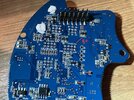TVS diodes are designed to conduct only when the voltage across them exceeds a certain voltage. They are designed to absorb the energy of voltage spikes.
Unidirectional TVS diodes will conduct like a diode in one direction, so they will start to conduct at about 0.6 V, for any voltage rating. A unidirectional TVS can be useful to limit positive voltages to whatever is required, while keeping negative voltages very low.
One downside of unidirectional TVS diodes are that some circuits, such as ac circuits, have similar positive and negative voltages in normal operation so limiting the negative voltages to a low value would stop the circuit working.
Another downside of unidirectional TVS diodes is that they can be fitted the wrong way round. Some dc circuits, such as relay coils, will work either way round, and so they may be connected either way round. Fitting a unidirectional TVS to a dc relay would stop it working if the relay were connected one way round and the relay manufacturer won't know which polarity it will be used with.
In either ac applications, or in dc applications where the polarity is unknown, bidirectional TVS diodes are often used. The bidirectional TVS is basically two unidirectional TVS diodes in series in opposite directions. The bidirectional TVS diode will start conducting at much the same voltage in either direction.
For your application a bidirectional TVS diode would have the advantage of working either way round, so as long as you put it in series with the power supply to the display, it should be fine and you won't have to work out which way round to fit it.
The TVS diode will get hot when running. The one that you have quoted has Thermal Resistance Junction to Ambient of 75 °C/W, so that means it will be 75 °C hotter than the air around it when it is dissipating 1 W of electrical power. A rise of 75 °C is probably acceptable. You will get 1 W of power with 24 V across the TVS diode when there is 42 mA flowing.
I would regard that as the maximum. If the display takes more than that, you need a different design. If the display takes less than that, the TVS diode will run cooler. You need to consider the minimum and maximum voltage that the display needs, and the minimum and maximum battery voltages. The current that the display takes may vary as the voltage varies.



